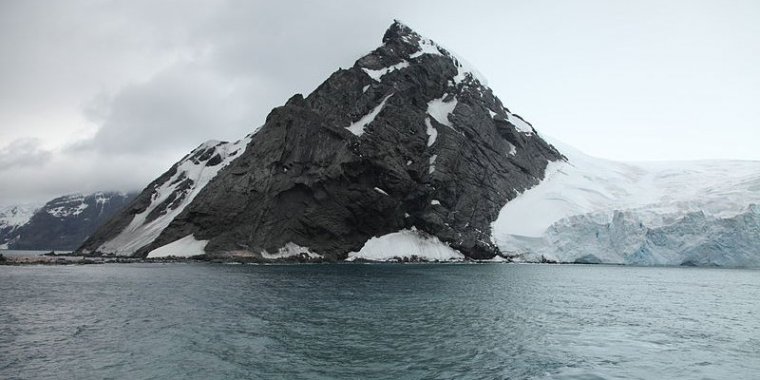| News / Science News |
Marine organisms in Southern Ocean will face shallower zone for life
Marine organisms in the Southern Ocean may find themselves between a rock and a hard place by the end of the century as ocean acidification creates a shallower zone for life.

In the South Shetland Islands, Antarctica. ![]()
The new research results forecast that at current carbon dioxide emission rates, the depth at which some shelled organisms can survive will shrink from an average of 1,000 meters (3,280 feet) to just 150 meters (492 feet) by the year 2100, a drastic reduction in habitat.
The change, which could happen over a period as short as one year in some areas, could significantly impact marine food webs and lead to cascading changes across ocean ecosystems, including disruptions of fisheries.
"This study shows that our current carbon dioxide emission rates are influencing not only the chemistry of the Southern Ocean but its food web structure as well," says Simone Metz, program director in the National Science Foundation's (NSF) Division of Ocean Sciences.
Acidification occurs when oceans absorb atmospheric carbon dioxide (CO2) created by burning fossil fuels. The absorption alters the water's chemistry, lowering its pH and reducing the amount of available carbonate, which organisms such as corals and pteropods (mollusks) use to construct their calcium carbonate shells.
These calcifying organisms will struggle to build and maintain their shells as acidification proceeds. In the future, a pocket of corrosive water will sit just below the surface, making life difficult for these primarily surface-dwelling species.
The Southern Ocean is particularly vulnerable to acidification due to colder waters that increase the solubility of CO2 and upwelling that brings carbon-rich water close to the surface.
The study used data from the Community Earth System Model (CESM) to forecast ocean acidification under several CO2 emission assumption scenarios, looking at changes in calcium carbonate saturation. The researchers also examined water samples collected from previous expeditions to the Southern Ocean.
"We suspect that previous studies have overlooked the emergence of this shallow horizon by averaging data from different models rather than looking at individual models," said co-author Gabriela Negrete-Garcia of the Scripps Institution of Oceanography.
While the individual simulations of the model differed on the timing, the research suggests that changes may be inevitable in large regions of the Southern Ocean, regardless of future mitigation efforts.
If emissions were curbed tomorrow, this sudden shallow horizon would still appear, even if possibly delayed. That inevitability, along with the lack of time for organisms to adapt, is most concerning. (National Science Foundation)
YOU MAY ALSO LIKE



